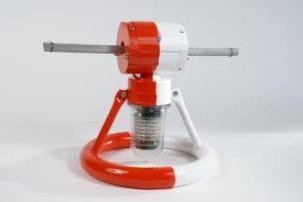The oxygen sensor. Description. Appointment
Oxygen concentration sensor or lambda probeis designed to determine the level of oxygen in the exhaust gases. Effective (environmentally and economically) the motor is provided by a constant level of the ratio in the fuel mixture of fuel and air in all operating modes. The process of controlling the content in the exhaust gases of oxygen is called lambda regulation.
In the case of a lack of fuel-air mixtureair, there is no complete oxidation of carbon monoxide and hydrocarbons. When the air is saturated, on the other hand, there is no complete decomposition into oxygen and nitrogen.
The exhaust system is equipped with a lambda probe. It should be noted that on certain models of machines, not one oxygen sensor is used, but two. At the same time, one is installed behind the catalytic converter, and the other after. The use of two sensors helps to increase control over the composition of exhaust gases and to ensure the most efficient operation of the neutralizer.
The oxygen sensor can be either two-point or wideband.
The first is installed after the neutralizer, andin front of him. The two-point oxygen sensor fixes the excess air ratio of the fuel air mixture in accordance with the concentration value in the exhaust gases of oxygen.
The design is presented in the form of ceramicelement, which has a bilateral coating of zirconia. The oxygen sensor is checked by an electrochemical method. On the one hand, the electrode is in contact with the exhaust gases. On the other hand - with the atmosphere. With different oxygen content, a voltage is created at the ends of the electrode. The higher the level (the fuel mixture is depleted), the lower the voltage. Accordingly, the higher the concentration (the mixture is considered enriched), the higher the voltage.
Oxygen sensor electrical signal sendsinto the electronic control unit in the motor control system. In accordance with the signal level, the executive structures of those systems in the car that are under the control of this control unit are affected.
The design of the broadband sensor is presentedin the form of a pumping and a two-point element. Determination of the value of "lambda" is carried out with the use of current when pumping. This device is used as the inlet oxygen sensor of the catalytic converter. Under pumping is understood the process of a physical nature. During the injection of oxygen from the gases passes through the pumping element under the influence of current. The principle by which the device operates is based on the ability to constantly maintain a voltage of 450 mV in a two-point cell between the electrodes due to a change in the injection current.
Decrease in oxygen content in gases (atenriched fuel mixture) is accompanied by an increase in voltage between the electrodes available in the two-point ceramic element. The signal is fed from the element to the electronic control unit. Based on the signal on the injection element, a current is generated with a certain force.
In turn, the current promotes pumping inmeasuring gap. The voltage thus reaches a certain value. At the same time, the current intensity indicator is a measure of the concentration of oxygen in gases. The analysis and transformation into control actions on the devices of execution in the injection system is carried out by the control unit.
With a lean fuel mixture, the functioningbroadband device occurs in a similar manner. The difference is that oxygen is pumped out from the measuring gap under the influence of current.
</ p>







